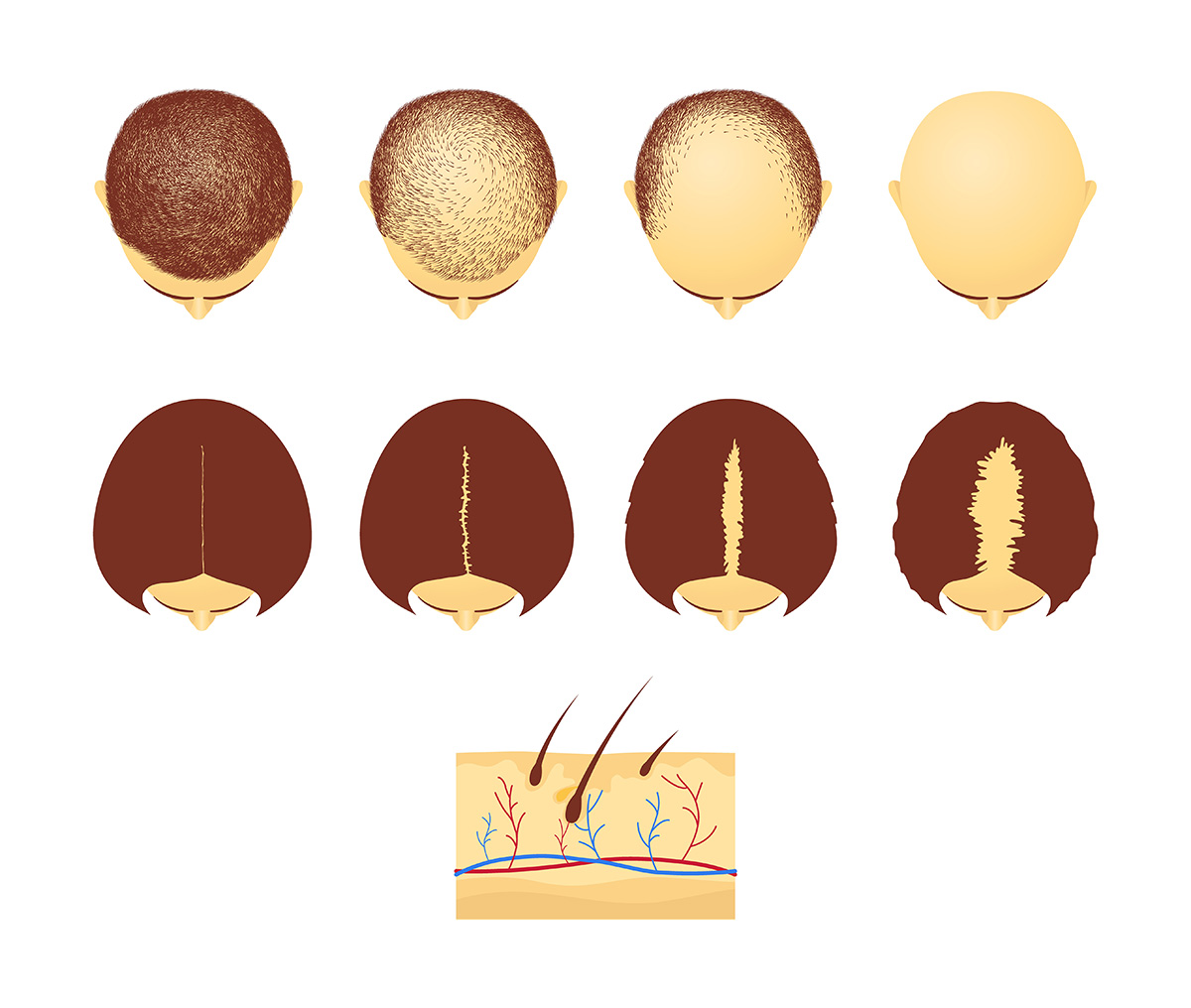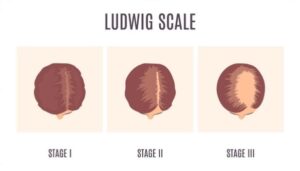 No matter what age, women desire full, healthy & radiant hair. Thinning hair and hair loss, whatever the cause, is distressing and often detrimental to mental health.
No matter what age, women desire full, healthy & radiant hair. Thinning hair and hair loss, whatever the cause, is distressing and often detrimental to mental health.
Alopecia causes hair loss. It comes in different forms but it is not contagious. Alopecia Areata is an autoimmune disease that can cause hair loss on any part of the body and affects both men and women. The body attacks the hair follicles creating unpredictable hair loss and regrowth cycles. Hair may regrow without treatment but can leave bald areas or patchy hair growth.
Androgenetic Alopecia or pattern hair loss is one of the most common types of Alopecia. In this genetic condition, there is heightened androgen activity in the body. The hormone androgen is in charge of growth and reproduction in men & women (have lower levels) but also regulates hair follicle growth.
Alopecia in females may start from the onset of puberty but it is common after menopause. Unlike men, women with alopecia rarely go bald. Female pattern hair loss (FPHL) starts with thinning at the parting line of the hair before it gradually spreads throughout the top of the head.
Causes of Alopecia in Women
Genetics play a main role in alopecia along with hormone-related factors like:
- Birth control medication
- Pregnancy
- Ovarian cysts
- Menopause
Scale of Female Pattern Hair Loss
According to Ludwig’s scale, there are three general types of female pattern hair loss (FPHL)

Type I – the thinning of hair in the scalp is noticeable
Type II – the loss of hair is more pronounced and the scalp is easily seen
Type III – baldness within the crown
Currently, there is no cure for Alopecia but here are some medications and treatments which can help with hair loss.
Treatments
Anti-androgens
A hormone therapy that stops the overproduction of androgen can be used to regulate hair loss. Anti-androgens are commonly prescribed by doctors to females with hormonal disorders such as PCOS (Polycystic Ovary Syndrome).
Some possible side effects with taking anti-androgens are: increased risk of depression, low sex drive, diarrhoea, and fatigue.
Talk with your doctor about anti-androgens to see if they could work for you.
Minoxidil
So far Minoxidil is the only over-the-counter topical drug approved by the FDA to treat hair loss. Minoxidil is available in 2% and 5% formulas.
Minoxidil is applied on dry hair and scalp, carefully spread on the hair follicles. Air-dry the scalp before applying any styling product.
Minoxidil reduces hair loss and stimulates hair growth but it is not a permanent fix for hair loss. For continued hair growth, you must continue using Minoxidil.
During the first 2-8 weeks, the use of Minoxidil may increase hair loss. Shedding of hair will stop once the new hairs grow. Most people start seeing improvements in 4-6 months.
Hair transplant
Hair transplant is a surgical procedure to remove small pieces of scalp and hair from a donor area, usually at the back of the head, then transplanting them to the thinning or balding area. Hair transplants are a solution for women who have: Traction Alopecia, undergone surgery, thinning in the hairline and/or crown and accident scarring.
Wigs
There are different kinds of wigs depending on the alopecia coverage like:
- hair toppers for the crown
- fringes and lace front wigs for thinning hairline
- hair extensions for the bald/thinning spots
Hair extensions can worsen alopecia because of pulling or traction.
Scalp Micropigmentation Treatment
Scalp Micropigmentation Treatment (SMP) is a non-invasive procedure that uses microneedles to insert pigments through the upper dermis of the skin.
Suitable for alopecia fill-ins and scalp area fills, this micro tattooing procedure adds density to thinning or bald spots by tattooing ink that mimics ‘hair follicles’ onto the scalp. It can be applied to long or short hair. Colour pigments in different shades imitate the natural hair color and look of hair follicles resulting in the impression of fuller, thicker hair.
SMP does not carry the risks of other treatments. SMP is less painful compared to tattooing. The procedure takes around 3-4 sessions, each session can last up to 2 hours depending on the amount of scalp area to be covered.
Clients see improvements from the first treatment. With SMP, there is very little recovery time. SMP lasts for years and clients can go about a normal life and continue with exercise and even swimming.
Before undergoing scalp micropigmentation treatment, it’s important that you find an expert SMP practitioner, to ensure precision work and the right style that suits a client. Safe operating procedures and a high level of cleanliness should also be taken into consideration.
Here in Scalp Provoco, Ravi has had extensive experience as an SMP artist. He has helped many clients gain back their confidence through natural-looking scalp micropigmentation treatments.
For a free online or clinic consultation contact Scalp Provoco or Sian Dellar.
Support Group
You may also benefit from joining a support group, or speaking to other people in the same situation on online forums.


Comments are closed.